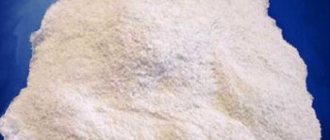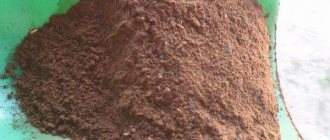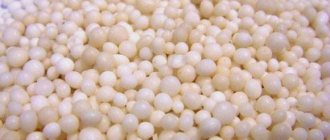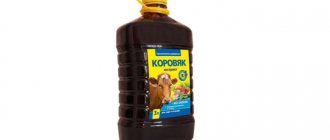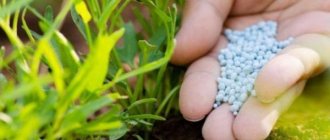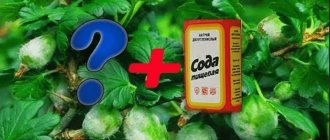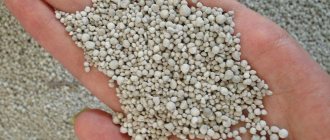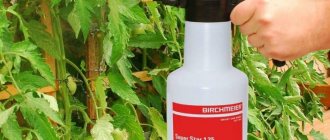Home / Preparations and fertilizers
Back
Published: 10/01/2021
1
5/5 — (1 vote)
Gardeners who prefer organics use bone meal as a phosphorus fertilizer in their dachas. The natural product is affordable, environmentally friendly, and at the same time enriches the soil with nutrients necessary for plants.
Bone meal, due to its characteristics, will not completely replace fast-acting mineral fertilizers, but it is quite suitable as an adjuvant. The main thing is to know the composition and characteristics of the substance, following the rules of use to obtain the maximum effect.
- 1 What is bone meal
- 2 Types
- 3 “Pros” and “cons” of fertilizer
- 4 Norms and methods of application by crop
- 5 Storage
- 6 Reviews
What is bone meal
Scientifically, the product obtained after processing the bones and horns of cattle, horses, birds or shelled crustaceans is called phosphonitrogen. It is a fine fraction powder of yellowish, brown, brown color. The amount of large (up to 3 mm) particles allowed according to GOST is no more than 5% (this is data for the highest grade).
It contains phosphorus, nitrogen, calcium, as well as copper, iron, potassium, magnesium, zinc. Organic components account for up to 25-30%, mineral components – 56-62%. The exact percentage of certain substances depends on the type and method of processing of raw materials.
Several technologies are used in the fertilizer production process:
- steaming and then subsequent grinding of the bones. Phosphorus content – 20-25%;
- degreasing, steaming and grinding to a powder state. With this option, all fatty and adhesive components are removed from the raw material, which significantly improves the quality of the final product. Phosphorus content – 30-35%;
- chopping and grinding raw bones. The resulting powder contains up to 15% phosphorus.
The most valuable flour is the one obtained through a long process of defatting and steaming. Fertilizer made by grinding ordinary raw materials has an affordable price, but a lower content of useful phosphorus.
Phosphoazotine is applied to various vegetable and garden crops and is used to feed outdoor flowers and indoor plants. Experts classify the product as a slow-acting fertilizer. They are applied to open ground ridges, in greenhouses and greenhouses, and to flower beds.
In addition, dry bone powder improves the structure of the soil, making it loose and moisture-absorbing, and helps reduce acidity. It is necessary to take into account this property of the product and do not use the additive for plants that prefer acidic soils (ferns, heather, azaleas, rhododendrons, lupins).
In livestock farming, flour serves as a feed additive to the main diet of livestock (as a source of calcium).
DIY Organic Powder
Most often, fertilizer is purchased in specialized stores. However, avid farmers create such a “masterpiece” at home. They follow simple instructions provided by experienced gardeners. Let's learn more about how to make bone meal yourself to feed plants.
The first step is to collect or buy the necessary raw materials and a mechanism for grinding them. Then they proceed according to this scheme:
- crush bones;
- dry the resulting powder in a dryer or in the sun;
- cook in a saucepan to reduce fat content;
- grind again to a uniform texture;
- sent to a centrifuge to completely remove moisture;
- spread on plastic wrap in a thin layer.
The raw materials are thoroughly dried in the sun. To do this, mix it regularly with your hands or a shovel (depending on the amount of powder). At the last stage, the raw materials are ground again to make flour. Store it in a cool, dry place for about 6 months using plastic bags.
So, we learned how to use bone meal as fertilizer for potatoes, tomatoes and carrots. The scheme is quite simple. Fertilizing is applied in the fall when loosening the soil or in the spring when planting vegetables. Fruit trees and fruit bushes also need phosphorus. Bone meal is added when replanting plants or periodically watered the root area. The substance is no less effective for indoor crops. It is used according to the dosage established by experts. If desired, you can make the powder yourself at home.
Kinds
Animal raw materials for obtaining organic fertilizer are different, therefore the finished product differs in composition. A veterinary check for the presence/absence of pathogenic microorganisms in raw materials is required. The following types of flour are produced:
- horn shavings. Obtained by processing the horns, hooves of cattle and other types of livestock. Contains up to 8-10% nitrogen. When adding flour to the ground, nitrogen is released slowly, so burns to the root system of plants are excluded;
- fishbone. It has a high content of phosphorus (16-18%), protein. The main raw materials are low-quality fish, fish waste (heads, ridges, fins, etc.);
- meat and bone The raw materials for production are bones and low-quality (unsuitable for the food industry) animal carcasses. It is recommended to use meat and bone meal for all garden crops (with the exception of plants that prefer acidic soils);
- blood It is produced less frequently and contains up to 11-13% nitrogen. Raw materials are liquid substances taken from slaughterhouses. The product has a specific smell. During the production process, the waste is dried, then the composition is produced in the form of granules or powder on special lines. When used, mix with regular bone meal to obtain maximum effect;
- armored Production is established in maritime countries, but is not produced in our country. Raw materials – shells of crustaceans, shrimp, and crabs containing large amounts of chitin. Feature – high phosphorus content.
In addition, the fertilizer is classified by variety, taking into account the percentage of moisture and protein content
Results of proper application
Phosphonitrogen is applied to the depth of the arable layer - 25–35 cm, closer to the roots of the plants.
It has the greatest effect on soils:
- acid soddy-podzolic;
- gray forest;
- leached chernozems.
To prepare mineral mixtures (fat), mix with the following fertilizers:
- nitrogen - ammonium nitrate or urea;
- potassium - potassium chloride or potassium salt.
It is used to prepare composts with organic fertilizers that have high acidity - peat or manure. The acid in organic fertilizers is involved in the decomposition of phosphonitrogen and the release of available phosphorus.
"Pros" and "cons" of fertilizers
Both fish and meat and bone meal, judging by the reviews, serve as excellent top dressing in the garden. Among the “advantages” of the supplement:
- organic product;
- ease of use;
- suitable for most plants;
- can be used at different times of the growing season;
- due to the gradual release of components, it does not cause stress to crops;
- allows you to improve the composition of the soil on the site, reduces soil acidity;
- the presence of different types of flour (you can choose fertilizer depending on your needs);
- economical (apply 1-2 times per season);
- low price.
"Minuses":
- before use, it is necessary to study the composition of the soil on the site, otherwise the use of fertilizer will not give the expected result;
- it is important to comply with application rates, take into account the crops’ needs for phosphorus, calcium, and nitrogen;
- A natural animal product with a specific odor attracts carnivores. Flour must be embedded in the ground, excluding access for pets to the beds. Eating fertilizer by cats or dogs leads to animal poisoning, often fatal.
As with any other fertilizer, it is better to give the plants less than to allow excess nutrients.
Advantages
Compared to other beneficial supplements, this mixture has the following advantages :
- nitrates and pesticides, which are dangerous to human health, do not enter the soil;
- fertilizing is applied at any stage of plant growth (but no later than 15 days before harvest);
- the product can be purchased at a low price;
- basically, there is no need to dilute with water - you can use it in its original form;
- economical consumption;
- the fertilizer is quickly absorbed by the root system, the result is noticeable almost immediately;
- suitable for fertilizing all crops, including indoor ones;
- has a positive effect on the quality and quantity of the harvest.
Norms and methods of application by crop
Before using phosphonitrogen, be sure to examine the soil in the area for acidity.
On a note! Every gardener and gardener must know the pH of the soil on the site in order to apply any fertilizers according to the parameters.
Flour is not added to alkaline and neutral soils; it is mandatory to use on acidic soils - to balance the composition and deoxidation.
Directions for use:
- for digging (dates - autumn or early spring);
- in holes or planting pits before planting seedlings;
- embedding into the ground with a rake (usually this method is recommended for greenhouses so as not to turn the soil over);
- in liquid form as a solution.
The powder is not recommended to be mixed with mineral fertilizers. But the combined use of phosphonitrogen with poultry droppings, humus, and compost is allowed. Good results when applying the additive are obtained on poor soils.
The table shows the norms and methods for applying bone powder to various crops.
| Cultures | Methods, application rates | Deadlines | Notes |
| Tomatoes |
| Spring, autumn | |
| cucumbers |
| Spring | |
| Potato |
| Spring | |
| Strawberry |
| Spring, autumn | Liquid fertilizing is allowed during the growing season |
| Flowers | In the holes before planting, 2 tablespoons of the additive | Spring, early summer | |
| Fruit trees | During planting of seedlings. 2-3 cups per hole with mixing with soil | Spring, autumn | |
| Berry bushes | During planting of seedlings. One glass per hole with soil mixing | Spring, autumn | |
| Lawn | Incorporation into the ground when preparing the area for sowing lawn grasses. 2-3 large glasses per 1 square meter | Spring | Embed into the ground using a rake; no powder is left on the surface. |
Liquid feeding with bone meal is indicated for tomatoes, eggplants, sweet bell peppers, and cucumbers. This fertilizer is especially suitable for heavy soils. Reviews from summer residents say that productivity increases and the taste of fruits improves.
But we must remember that the supplement acts slowly, so you should not expect immediate results. This is a long-lasting fertilizer, so to achieve an immediate effect (for example, with a critical lack of phosphorus in plants), mineral compositions are recommended.
When adding phosphonitrogen to the mixture, humus or mullein, flour, and coarse river sand are used. Proportion: 1:2:3. Chicken manure is also added to the mixture, the proportion will be: 1:2:3:1.
For indoor plants
The soil for most house flowers is a universal peat-based mixture. It is similar to a plant mixture for seedlings. Therefore, the rate of adding bone meal is the same. For every liter of nutrient soil you will need 1 tablespoon (without a slide) of fertilizer.
Important ! Bone meal should not be used when planting or caring for indoor azaleas. Fertilizing neutralizes the soil reaction, and representatives of the Heather family grow in an acidic environment. For the same reason, this fertilizer is not used when growing the following garden shrubs:
Storage
Since bone meal is a natural animal product, storage conditions and periods should be carefully observed. On the fertilizer packaging, manufacturers indicate the date of manufacture and exact terms of use.
Do not use expired additives! Place bags of flour in a ventilated area, avoiding moisture and direct sunlight. Poor-quality fertilizer acquires a putrid or musty odor and is not suitable for use.
Chemical composition of fertilizer. The role of nutrients in plant development
Bone meal contains many useful substances, which, in turn, include most of D.I. Mendeleev’s table.
Among them it is important to highlight:
| Macronutrients | Microelements |
| Phosphorus | Iron |
| Calcium | Sodium |
| Potassium | Magnesium |
| Nitrogen | Zinc |
| Copper | |
| Manganese | |
| Cobalt | |
| Iodine (see → how to apply fertilizer) |
The percentage of phosphorus in bone meal is the highest, therefore the product is classified as a phosphate fertilizer (find out → types of phosphate fertilizers).
Phosphorus is the main part of DNA, the genetic memory of plants.
The contribution of the element to plant life is invaluable; phosphorus is
In other words, without phosphorus most vital processes are impossible. That is why, the lack of an element negatively affects all, without exception, plant organs, both above-ground and underground. The deficiency can be easily replenished with the help of bone meal, which is rich not only in phosphorus, but also in other useful compounds.
The greatest advantages of the fertilizer are its organic origin and absolute environmental safety for plants, humans and the environment. By using fertilizer in the right dosage, you don’t have to worry about harmful substances getting into the fruit and causing damage to your health.
Other positive features:
Disadvantages include excess consumption. An excess of nutrients is no less harmful to plants than their deficiency. That's why it's important to follow the instructions included with each variety of bone meal.
